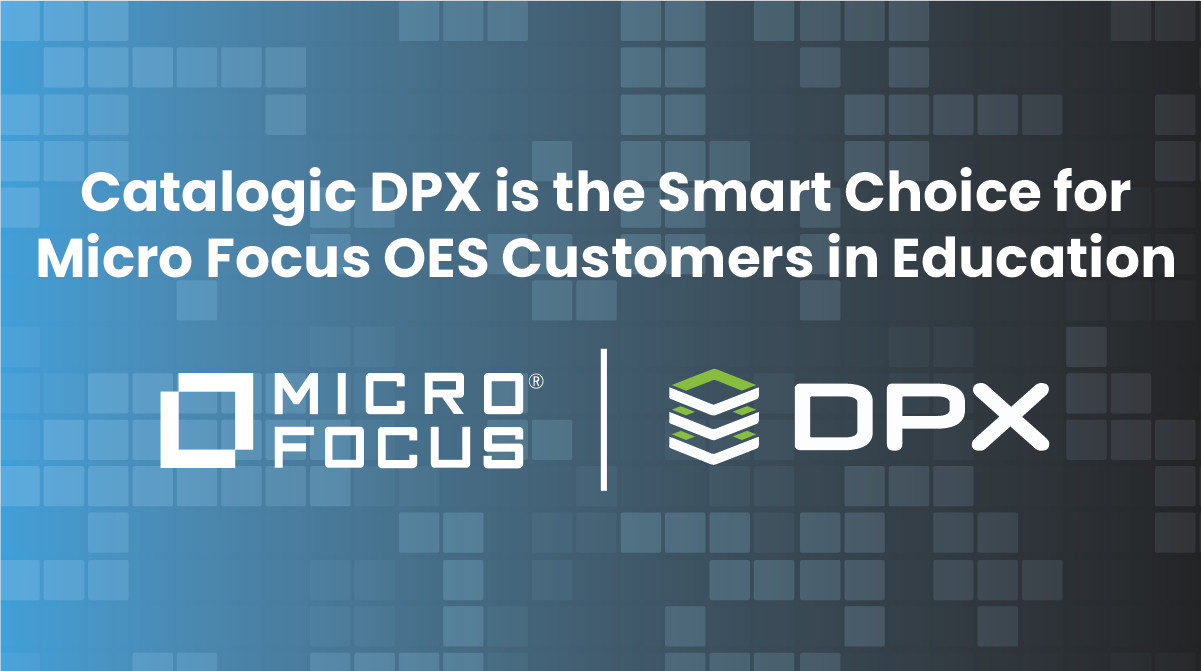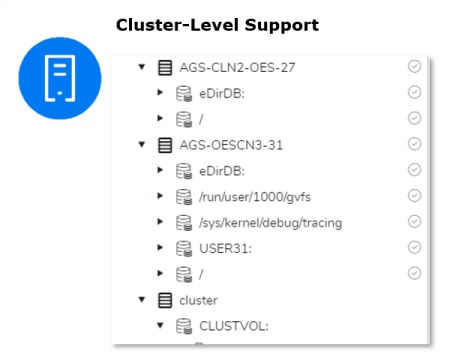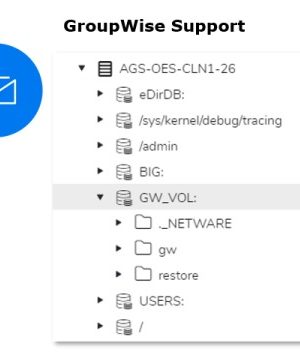Catalogic DPX is the Smart Choice for Micro Focus OES Customers in Education

In 2014, Micro Focus acquired Novell, in a move that extended the mainframe software provider’s reach into Linux. This acquisition included Novell’s Open Enterprise Server (OES). Micro Focus OES is a server operating system that provides a virtual computing environment and shared network resources, giving it the functionality of an enterprise-scale server operating system. OES consists of multiple modules and components around files, storage, directory, and web application management which are essential for shared files, print networks, driver deployment, identity-based management, and network connectivity for Windows, Mac, and Linux client devices.
Protecting Micro Focus OES Data in an Education Environment
All these things make OES a very useful tool for school districts, universities, and colleges around the world. Having the ability to provide shared network resources to faculty and staff, as well as to students, provides benefits for school administrators. Due to the reliance on these shared resources, protecting the shared files is extremely important.
For a specific school district and an art university, having the need to recover lost or deleted files became an everyday occurrence. For years, they had relied on Unitrends to provide them with granular backup and recovery of their OES data. However, for both organizations, the administrators arrived to work one day and realized that their scheduled backup jobs had failed. As they usually would in these instances, they opened a support ticket with Unitrends. But this time, they were told that OES-specific backups are no longer supported.
Replacing Unitrends with Catalogic DPX for Micro Focus OES
Given Unitrends no longer supports their OES backup agent, these customers would have to instead utilize Unitrends virtual machine snapshots to protect their OES data. With this workaround, they would lose the ability to perform single-file recovery of an OES resource, something they previously did on a regular basis.
Luckily for them, Catalogic DPX provides a replacement for Unitrends that is fully committed to supporting Micro Focus OES. DPX has provided industry leading protection and recovery for Novell products since 1997, and we are committed to continuing that. We have even pioneered many data protection features such as OES cluster-support and deep GroupWise integration. And unlike Unitrends and other data protection vendors, Catalogic has never backed away from our commitment to the Novell family of products, even after the acquisition by Micro Focus. DPX customers will be able to continue to perform granular backup and restores of their Micro Focus OES data.
DPX Cluster-level and GroupWise Support for OES
In Figure 1, the virtual node is labeled as “cluster.” The item “V1” represents the shared resource. Objects oes-lx-c1, oes-lx-C2, and oes-lx-C3 are the server nodes in the cluster.DPX provides intelligent data protection for OES, which begins with being cluster-aware. This means that by using a virtual node concept, where all individual server nodes are represented together as a single entity, DPX is able to ensure that data is not backed up twice (from two different nodes in the cluster), and if a cluster node fails during backup of a shared resource, DPX continues to execute the backup by switching the task through the failover node. This ensures that critical infrastructure information is always protected.
Then, when it comes to recovery, restore of OES data is simplified. The user needs only to select the virtual node object and DPX is smart enough to restore the correct volume. The operator does not need to know the source of the data, or which node performed the backup. This avoids confusion and ensures a quicker, trouble-free recovery process.
DPX support for Open Enterprise Server includes cluster configuration, GroupWise environments, and backup of standalone and shared volumes, eDirectory, etc. It provides the ability to perform full, incremental, and differential backups, and these backups, unlike with Unitrends, can be targeted at the volume, directory, and even individual file level. Then, more importantly, files can be restored with security, metadata, and file-attributes/trustee rights still intact.
Figure 1. DPX OES Cluster

Figure 2. DPX GroupWise Environment

In Figure 2, you can see the layout for DPX GroupWise environment:
- (Po) shows Post Office resources
- (Dom) shows Domain Objects
- (DMS) Document Management Systems Library
- Other objects can include Binary Large Objects (Blb), and even (TMP) which are any other directories referenced by /HOME flags
DPX even has its own software-defined storage repository called vStor that can act as a disk directory for your OES backups. vStor will then perform deduplication and com-pression so that your storage is maximized.
DPX is Committed to Micro Focus OES Support
This school district and this art university are just two examples of the many Micro Focus OES customers who have been surprised by Unitrends dropping support for OES. By no longer supporting granular backup and recovery for OES, school administrators would have to resort to full VM restores, to recover a single lost or deleted file. This is simply inefficient and a waste of their time and resources. DPX, on the other hand, is committed to continuing to provide enterprise-level data protection, including the granularity needed for these school districts, universities, and colleges using Micro Focus OES.
If you are like many others and have been left out in the cold with no OES support by your backup vendor, give DPX a try. If you would like to learn more about DPX, you can request a live demo or even get a 30-day trial copy to try it for yourself. We’ll be happy to help you with the trial and provide our expertise to assess your backup environment for ransomware recovery.

